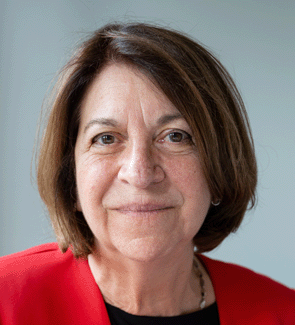
Reflections on the 2021 Admission Cycle
As the 2021 law school admission cycle enters the home stretch and we say farewell to the LSAT-Flex, which enabled more than 95,000 aspirants to continue to pursue their legal education journey despite the COVID-19 pandemic, I would like to offer a few thoughts on the past 16 months and also look ahead to the next admission cycle. I will begin with a walk down memory lane, starting with spring 2020 and the fall 2020 admission cycle.
Pivoting Quickly to the LSAT-Flex
It seems like a lot longer than 16 months ago that a mysterious pandemic hit, bringing waves of devastation and forcing the cancellation of virtually all public activities. LSAC monitored the situation closely and moved cautiously, but we were ultimately forced to cancel the in-person March, April, and June 2020 tests.
At the time, we all were extremely concerned about the potentially devastating impact that the cancellation of LSAT administrations could have on the 2020 admission cycle. Some experts were predicting a 10% drop in overall applicants, and perhaps even larger for minoritized candidates.
Our team worked around the clock for two months to design, develop, and test the online LSAT-Flex, which launched in May 2020, and to work with schools and candidates to confront this unprecedented emergency. I’m so proud of the way the entire legal education community pulled together.
In the end, instead of a 10% drop, we saw a 1.5% increase in applicants overall and even higher increases among some minoritized groups, such as a 2.5% increase for Black/African American applicants, and a 4.0% increase for Hispanic/Latinx applicants.
Most important, we saw a successful admission cycle, with more than 38,000 first-year law students matriculating in the fall of 2020 — perhaps the most diverse class in history.
Even as our team was racing to innovate and launch the LSAT-Flex, we took steps to address the potential access and equity issues around online testing. Our team continues to work hard to ensure every test taker with disabilities receives every testing accommodation to which they are entitled. In addition, we have provided nearly 4,000 free loaner devices to test takers who didn’t have a computer, and we have reimbursed hotel costs for nearly 2,000 test takers who didn’t have reliable internet or a quiet place to test.
The Fall 2021 Cycle: Surging Interest in Law School Continues
For a host of reasons, we’ve seen an enormous surge in law school applicants this year. Some of this is related to the ongoing COVID-19 pandemic and economic downturn that gripped the U.S. and other parts of the world throughout the initial months of this admission cycle, and from which we are now beginning to emerge.
It also seems clear that the long-overdue racial reckoning is playing a big part in the dramatic increases we are seeing in law school applicant volume. After a year in which the systemic injustices and inequities faced by individuals from marginalized identities have been the focus of national conversation — from the murders of George Floyd, Ahmaud Arbery, Breonna Taylor, and others, to the disproportionately negative impacts of COVID-19 on Black and brown people, to the disturbing increase in violence against individuals who identify as Asian, Asian-American, and Pacific Islanders — many people see law school as a pathway to fight for a more just and equitable society. The death of Ruth Bader Ginsberg and the subsequent United States Supreme Court nomination and confirmation process may have also contributed to a surge in interest in legal education.
As of July 1, applicants are up about 15% and applications are up 28% over this time last year. While these are big increases, they’re actually not the biggest year-over-year jumps we've seen in the past, and applicant volumes are still well below the historical levels from 2001 to 2011.
We are continuing to see increases across nearly all racial/ethnic groups, genders, and geographic regions. Black/African American applicants are up 15%. Hispanic/Latinx applicants are up 15%. Applicants from historically underrepresented groups are up 16% overall.
We are also seeing more highly qualified candidates, with higher LSAT scores across all racial/ethnic groups. Overall, applicants with high scores (160-180) are up 35% compared to this time last year. African American applicants with high scores are up 50%. Hispanic/Latinx applicants with high scores are up 44%. Candidates from historically underrepresented communities with high scores are up 45% overall. Some of these candidates are applying with test scores earned during the current cycle, but some are applying with test scores earned previously, reinforcing the point that some candidates are motivated by the pandemic and recent events to pursue legal education.
Overall, the average score for the roughly 144,000 three-section LSAT-Flex tests from May 2020 to April 2021 is about 0.9 points higher than the average score for the roughly 122,000 five-section LSAT tests from May 2019 to February 2020.
These are very positive trends, both in terms of surging interest in making a difference through law and advocacy, and the strength and diversity of the candidate pool.
Did COVID-19 lockdowns increase LSAT study and preparation?
Some people have speculated that scores are higher because the LSAT-Flex is a shorter test — three sections rather than five — but the research doesn’t support that theory.
Based on years of analysis of test takers of the five-section LSAT, we know there is no significant decline in performance in the fourth and fifth sections of the test.
So, if it’s not the length of the test, why are we seeing larger numbers of applicants with high LSAT scores?
Well, first of all, 26,000 more individuals took the test between May 2020 and April 2021, compared to that same period last year. More people taking the test means more opportunity for more high scores, and the vast majority of people with high LSAT scores tend to apply to law school.
Some have also observed that many test takers may feel more comfortable taking the test in the comfort of their own home, rather than traveling to a test center, dealing with parking or other hassles, and taking the test in a large, crowded, unfamiliar place. Others have noted that LSAC introduced Score Preview in August 2020, which allows first-time test takers the opportunity to see their score and decide whether to keep or cancel it. The knowledge that one could cancel after seeing the score may also have resulted in less anxiety on the part of first-time test takers.
But there may be another factor at work. Our research team recently looked at the data on how much time test takers say they spent preparing. They looked at a full year of in-person LSATs pre-pandemic, March 2019 through February 2020, then a full year of LSAT-Flex tests from May 2020 to April 2021.
The data show an enormous jump in preparation time — an increase of 25-30% in total hours of preparation, in many cases — starting with the May 2020 test, about two months after the COVID-19 pandemic forced closure of so many public activities. For the June 2019 LSAT, for example, test takers who scored in the top quartile reported spending an average of 194 hours studying and preparing for the exam. By contrast, for the June 2020 LSAT, top quartile scoring test takers reported an average of 252 hours, a 30% increase.
Our researchers have started to break down the data about preparation by race and ethnicity, and the results are consistent here, as well. Early analysis indicates particularly large increases in preparation times among Black/African American test takers, and members of other minoritized communities.
More research is needed, but the data on preparation would seem to be one likely explanation for the volume of high scores we are seeing.
Another explanation may be all the free and low-cost test preparation options LSAC has made available in recent years for candidates who cannot afford expensive private test preparation services. Our free, personalized Khan Academy Official LSAT Prep launched in June 2018 and is now used by up to 70,000 prospective test takers per month. Surveys show Khan LSAT prep use is highest among Black/African American and other underrepresented students, as well as women and economically disadvantaged students.
We are also seeing strong interest in our free and low-cost test prep resources on LawHub, which has gained more than 90,000 subscribers since its launch in March 2020.
LSAC’s fee waiver program may also be playing a role. Low-income candidates who qualify for LSAC’s fee waivers automatically receive a free one-year subscription to LSAC’s Official LSAT Prep Plus, which provides access to more than 80 full practice tests. This year, more than 6,400 candidates qualified for LSAC fee waivers, representing 10% of all applicants who used the LSAT in their applications. The fee waiver program plays an important role in promoting diversity, equity, and access. More than 72% of candidates who received LSAC fee waivers were students of color. Nearly 2,000 Black/African American candidates have been approved for fee waivers this year, a number equal to 24% of all African American applicants who used the LSAT as part of their application.
Navigating Uncharted Waters
COVID-19 disrupted virtually every facet of life, across all sectors and every community. In the fall of 2019, none of us — not LSAC, not law schools, not candidates and their families — knew that our worlds were about to be completely upended by the deadliest global pandemic in more than a century.
When the pandemic hit, every part of the legal education ecosystem did its best to respond. Schools scrambled to provide the best possible learning environments in a chaotic situation. Students were doing remote learning from empty dorms or locked down apartments or moving back in with their parents or struggling to find a place to land. Admission offices worked around the clock to connect with candidates knowing that face-to-face interviews and campus tours, and so many of their other tools, were not available. LSAC created and delivered the online LSAT-Flex in two months and moved all of its in-person events and forums online.
There have been bumps along the way, but transparency and communication have been more important than ever. It became clear relatively early that we were going to see a bigger applicant pool this year. LSAC maintains a free public website, open to everyone and updated 365 days a year — that provides aggregated data on exactly how many candidates have applied to law school so far, how many applications they’ve submitted, where they are from, and what their aggregate LSAT scores are, as well as demographic data on race, ethnicity, and gender identity.
It was clear in the fall and winter that this admission cycle was going to be a big one, both in terms of absolute numbers of applicants and high-scoring applicants. LSAC even took the unprecedented step of publishing interim score guides for the admission community over the course of the year, detailing exactly how many test takers had received each score on the LSAT-Flex, so schools would have the opportunity to plan. In fact, we published five separate interim score guides so that schools could have complete transparency into the scoring patterns in this unprecedented pandemic cycle instead of waiting until the end of the testing cycle to publish this kind of information.
The past year has been tragic and exhausting, but I’ve never felt more inspired to be a part our legal education community. Everyone has rallied together to support our candidates and ensure that their dreams of legal education can move forward.
We won’t know for sure for another few months, when classes start, but I believe the fall 2021 class will surpass even the Fall 2020 class as the most diverse class in history. And with everything that has motivated them to pursue law school, and everything the past year has taught them, I believe these students will do extraordinary things to build a more just, equitable, and prosperous world.

